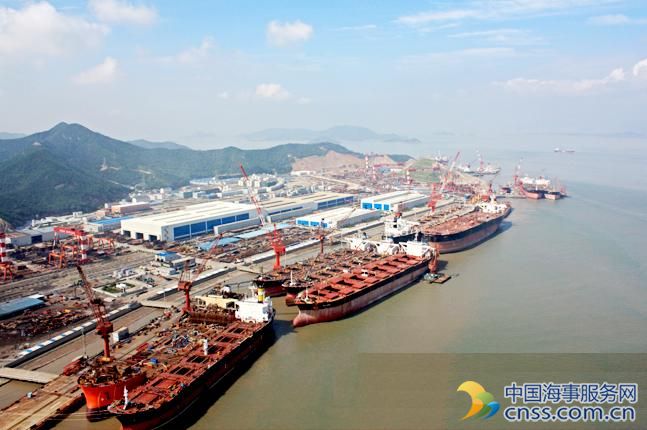The International Convention for the Control and Management of Ships’ Ballast Water and Sediments will soon enter into

In September, this year – after ratification by 53 Contracting Governments (representing 53.28% of the world tonnage – the IMO (International Maritime Organization) Convention for the Control and Management of Ships’ Ballast Water and Sediments, approved in London in 2004, will enter into force.
The Convention aims to strongly prevent, minimise and ultimately eliminate the environmental risks associated with ballast water management on ships engaged in international voyages. It was indeed found that the huge amount of sea water carried by ships for stability purposes contains algae, bacteria, microbes, small invertebrates and various animals that, once unloaded at a port, spread in the marine ecosystem that receives them and contaminate port and coastal marine waters, estuaries and lakes.
In the opinion of IMO – which began addressing this issue as early as in 1988 by issuing a number of guidelines and resolutions –, the lack of regulation on ballast water discharge poses a serious threat to marine biodiversity and can cause serious health problems (in case of transport and the consequent spread of toxic agents) and damage to coastal business activities.
In order to fight such phenomena, the IMO Contracting Governments have drafted a basic core of rules which they undertake to comply with, with the right – either individually or jointly with other IMO States – to take more stringent measures for ballast water management and the prevention and elimination of ballast water discharge.
The Convention applies to ships flying the flag of IMO Member States and engaged in international voyages. By contrast, the Convention does not apply to warships, vessels engaged in national voyages only, ships not carrying ballast water or ships carrying ballast water in sealed tanks and thus not subject to discharge.
The «obligations» undertaken by IMO Member States are, basically: (i) the obligation for shipowners to adopt ballast water treatment systems (BWTS) and equip their vessels accordingly; (ii) the obligation for each IMO State to directly verify compliance with the regulations on ballast water discharge by the ships calling at their ports; (iii) the obligation for each individual ship to carry a ballast water record book and an international ballast water management certificate.
The first obligation is certainly the most onerous and a harbinger of problems. The Convention indeed requires all ships to carry ballast water treatment systems meeting the IMO requirements. Such obligation certainly applies to newbuilds, whereas existing vessels are required to retrofit their systems at their first drydock following the entry into force of the Convention.
Significant concern has emerged within the shipping industry due to the fact that IMO has not yet clarified what systems, methods and technologies may be deemed suitable and, thus, be able to pass inspections at ports of other States, whether or not they are parties to the IMO Convention.
Shipowners will indeed have to incur enormous costs for retrofitting the ships already in their fleet and for the design and construction of new vessels provided with new equipment and systems allowing safe exchange of ballast water and properly built (i.e. in accordance with applicable hull strength and stability requirements).
The risk in this situation is that the investment needed for equipping vessels with ballast water treatment systems might turn out to be useless should they not be deemed compliant with IMO standards. This might result in huge damage to those IMO Member-State shipowners who have already started taking steps to bring their vessels in line with the Convention that is coming into force.
Moreover, the level of investment required for each ship might induce certain shipowners to give up, opting for «scrapping» their ships not equipped as required by the Convention.
A further concern stems from States who opted for not accessing the IMO convention like the US. The US indeed adopted their own rules on ballast water treatment, which currently appear to be much more stringent than IMO rules. The requirements concerning the approval of ballast water treatment systems – set out as early as in 2014 – are indeed particularly strict and might involve the invalidity of the systems already adopted by certain IMO Member-State shipowners.
For this reason, shipowners await with tense anticipation the decisions on marine environment protection to be made at IMO Committee meeting that will be held next October. It is hoped that, on that occasion, the mandatory requirements for ballast water treatment systems will be set out once and for all.
Shipowners are also asking to open a dialogue between IMO and the States who are not parties to the IMO Convention on ballast water and have already issued autonomous rules on ballast water treatment (i.e. the US), with a view to setting out some basic standard requirements for ballast water treatment systems in order to prevent ships coming from IMO States not being accepted at ports of third countries.
Source: Nctm Studio Legale
HEADLINES
- Do shipping markets want Biden or Trump for the win?
- All 18 crew safe after fire on Japanese-owned tanker off Singapore
- Singapore launching $44m co-investment initiative for maritime tech start-ups
- Cosco debuts Global Shipping Industry Chain Cooperation Initiative
- US warns of more shipping sanctions
- China continues seaport consolidation as Dalian offer goes unconditional